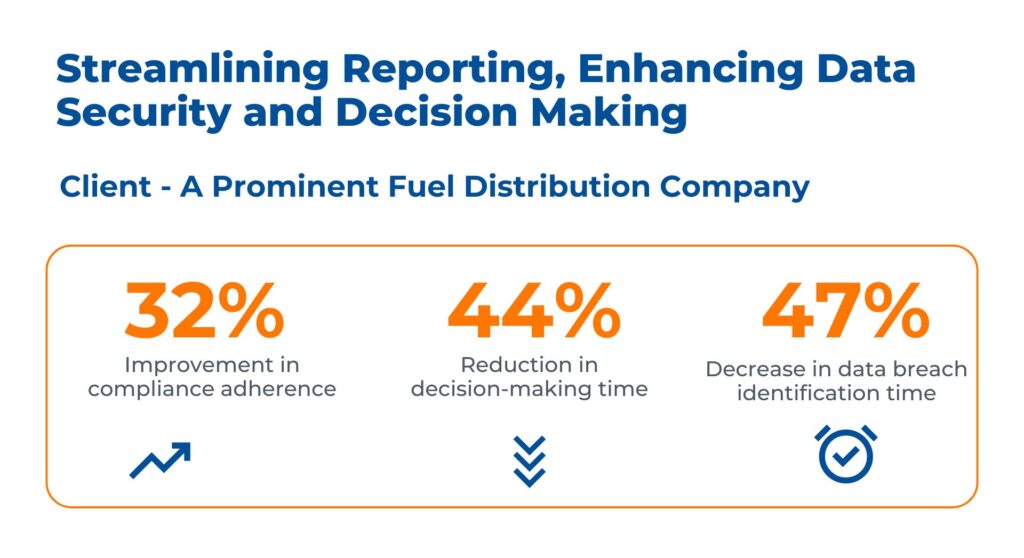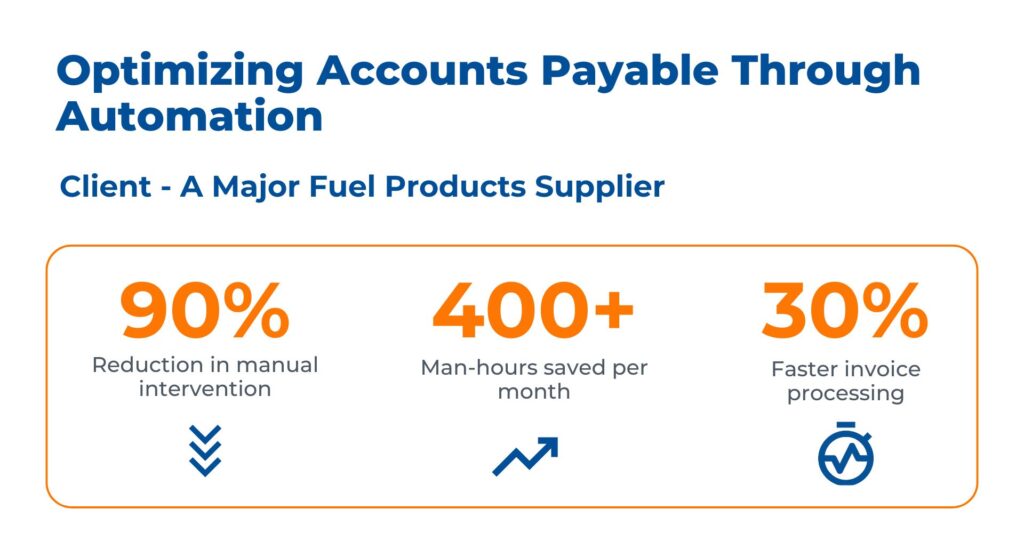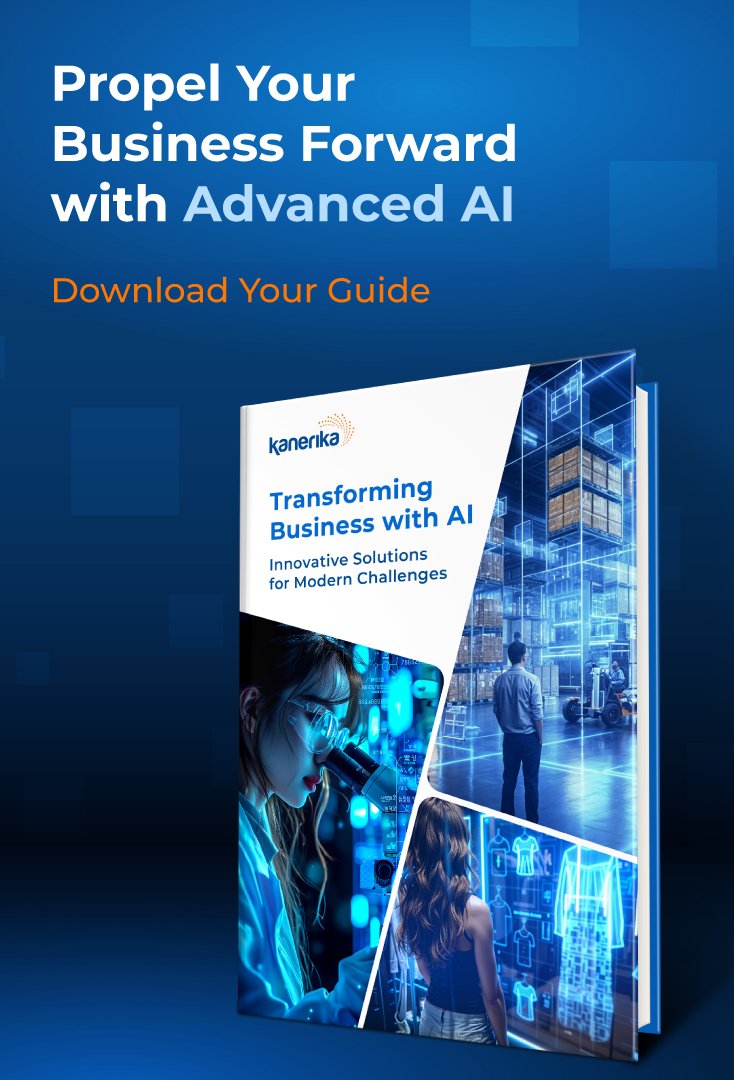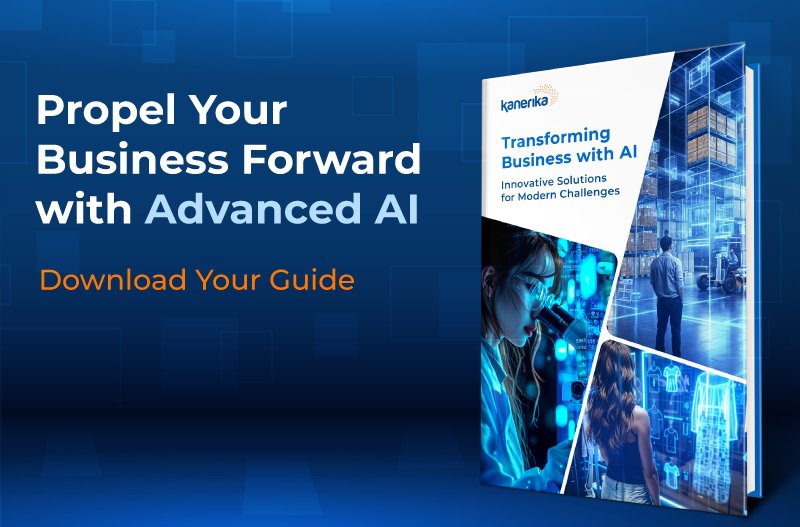Large volumes of data is generated daily. While the potential for valuable insights is immense, processing all this data manually is simply out of the question. At times, it is overwhelming to process and manage this data as you might be drowning in numerous spreadsheets and reports. With automated data processing, you can organize, process, and analyze information efficiently and seamlessly.
To understand the value of automated data processing, consider the following scenario – You are running an online bookstore. Every day, you receive hundreds of orders, update inventory levels, and track customer preferences. Manually managing all this data would be extremely difficult and time taking! However, with Automated Data Processing (ADP), your life becomes much easier.
ADP provides informative statistics on the purchasing patterns of its customers, automates processes like order processing, and even assists in forecasting future inventory requirements. With one less item to worry about, you can now use this time to concentrate on expanding your company and offering top-notch customer service.
Table of Contents
- What is Automated Data Processing (ADP)?
- Importance of Automated Data Processing
- Key Components of Automated Data Processing
- How to Implement Automated Data Processing
- Real-world Applications of Automated Data Processing
- Future Developments in Automated Data Processing
- Case Studies: Redefining Business Ops with Automated Data Processing
- Optimize Your Workflows with Kanerika’s Automated Data Processing Solutions
- FAQs
What is Automated Data Processing (ADP)?
Automated Data Processing (ADP) is like having a tireless data assistant. It uses computers and software to handle all those tedious data tasks you dread. Imagine automatically collecting information from various sources, cleaning up errors, and merging it all into a usable format. It can then analyze this data, identify trends, and even generate reports and visualizations. ADP transforms your raw data into actionable insights, saving you time, minimizing errors, and unlocking the true value of your information.
Importance of Automated Data Processing in Today’s Data-driven Business World
Companies generate massive amounts of information from customer interactions, sales figures, social media, and more. But what good is all this data if you can’t effectively use it? This is where Automated Data Processing can be very helpful for businesses. Below are some reasons why ADP is crucial for businesses in the data-driven world:
1. Boosts Efficiency and Productivity
Manual data processing is time-consuming and error prone. ADP automates repetitive tasks such as data entry, cleaning, and analysis so that human resources can be freed up for higher-level activities like strategic planning or customer relationship management.
2. Minimizes Errors and Ensures Accuracy
Human error is inevitable in manual data processing. ADP eliminates this risk through task automation, which produces cleaner and more reliable data, which in turn leads to better decision-making.
3. Unlocks Valuable Insights
Automated Data Processing enables fast and efficient analysis of large amounts of information. It reveals hidden trends, customer preferences, operational inefficiencies, and other issues that may not be easily found manually, thus empowering enterprises to make decisions based on facts that optimize processes while driving growth.
4. Improves Data Security and Compliance
Managing data security and compliance can be a complex task. ADP can streamline these processes by automating encryption, control access, and data audit trails. This will ensure the safety of your information while also helping you meet the necessary regulations.
5. Enhances Data Integration
Data integration can be improved through automated data processing solutions, which consolidate information from different sources into one place, thereby enhancing its availability for use across an organization. These solutions also foster collaboration among employees who need to work with similar datasets, ensuring uniformity in terms of how things are done or recorded within a given business setting.
6. Fosters Adaptability and Agility
Automated solutions are designed to be agile and adaptable, integrating with emerging technologies like AI and ML to cater to evolving business requirements, enabling organizations to manage data effectively and secure their future.
Key Components of Automated Data Processing
1. Data Collection
Automated Data Processing can automatically pull information from a vast array of sources. Internal databases containing sales records, customer details, and inventory levels are easy targets. But ADP can also reach beyond your company walls, extracting data from social media feeds, website analytics, and even sensor data from equipment. Additionally, ADP can handle data collected through forms and surveys, be it customer feedback or employee onboarding information. No data silo is safe! Even legacy systems, older programs that might not integrate seamlessly, can be tapped into by ADP to extract valuable information.
2. Data Cleaning
Raw data is rarely perfect. ADP tackles this challenge by identifying and correcting errors. Missing values are a common culprit, but ADP can plug these gaps using various techniques like calculating averages or medians. Inconsistencies can also creep in, like typos, duplicate entries, or data formatted differently across sources. ADP has a keen eye for these inconsistencies and applies data cleansing rules to fix them. Finally, outliers, extreme data points that might skew your analysis, are flagged by ADP. It provides options to handle them appropriately, ensuring your analysis is based on accurate data.
3. Data Integration
It seamlessly merges data from these various sources into a unified format. Standardization is key here. ADP ensures all data adheres to a consistent format, like using the same date format or units of measurement, allowing for smooth integration. Mapping corresponding fields from different data sources is another trick up ADP’s sleeve, ensuring accurate merging. And if your data needs some transformation, ADP can handle that too. For instance, it can convert currencies or aggregate data points for better analysis.
4. Data Analysis
Once the data is clean and integrated, ADP unleashes its analytical power. It can perform complex calculations on your data, like calculating averages or standard deviations, to reveal underlying patterns. But ADP goes beyond simple calculations. It can identify trends and patterns within the data, allowing you to forecast future outcomes and make informed decisions. Furthermore, ADP doesn’t just present raw numbers – it delves deeper to uncover hidden relationships and generate insights from your data.
5. Data Reporting
Say goodbye to the tedious task of manual report generation. ADP automates the creation of reports and visualizations tailored to your needs. Imagine generating sales reports for managers or detailed marketing reports for campaign analysis – all with just a few clicks. And to make understanding these reports even easier, ADP transforms data into charts, graphs, and interactive dashboards. Complex information becomes clear and readily understandable, allowing you to identify trends and patterns at a glance.
Read More – Customer Service Automation: Proven Ways To Enable Efficiency
How to Implement Automated Data Processing
1. Identifying Data Sources and Requirements
The first step involves carefully assessing your data landscape. What data are you currently collecting? Where is it stored? More importantly, what data do you need to achieve your business goals? Understanding your data needs helps determine which specific tasks within Automated Data Processing to prioritize.
2. Selecting the Right Automation Tools
The ADP toolbox comes with numerous options. There are data integration platforms that seamlessly merge information from various sources. Workflow automation tools can automate repetitive tasks like data cleaning and transformation. Consider factors like your budget, data volume, and technical expertise when choosing the right tools for your needs.
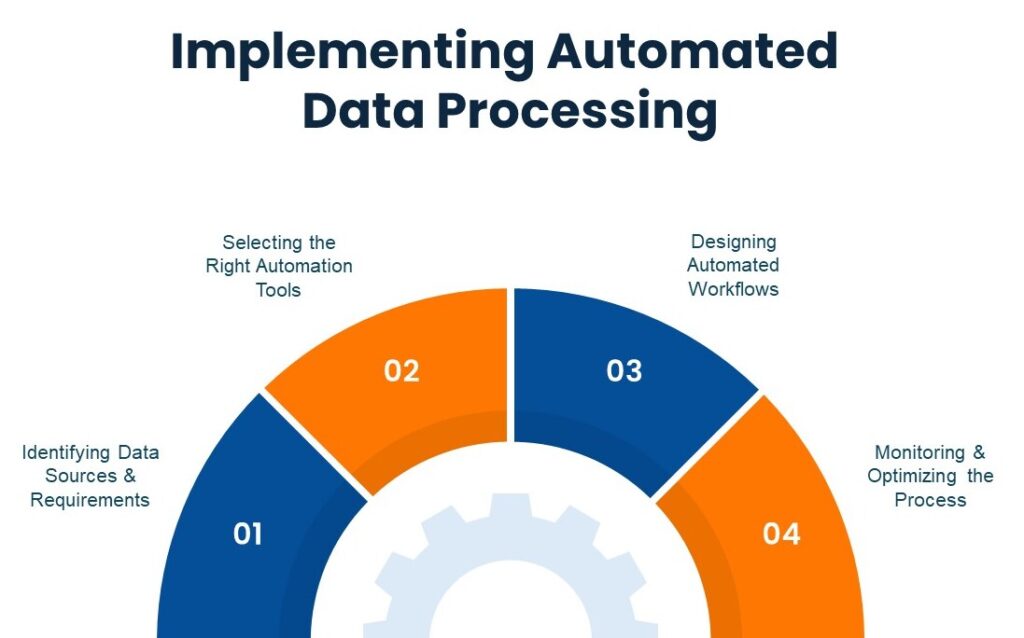
3. Designing Automated Workflows
Think of this stage as building a data assembly line. Map out the specific steps involved in processing your data – data collection, cleaning, integration, analysis, and reporting. Utilize the chosen automation tools to automate each step within the workflow. Design your workflows to adapt to changing data requirements as your business evolves.
4. Monitoring and Optimizing the Process
Automated Data Processing isn’t a “set it and forget it” solution. Regularly monitor your automated workflows to ensure they are functioning smoothly and delivering the desired results. Track key metrics like data quality and processing times. Fine tune your workflows as needed. Continuously evaluate your data needs and adjust your ADP strategy to maximize its effectiveness.
Real-life Applications of Automated Data Processing
1. E-commerce
ADP automates tasks like order processing, inventory management, and customer data analysis. This allows you to track product popularity, predict stock needs, and personalize marketing campaigns for enhanced customer experience.
2. Logistics and Supply Chain
Automated Data Processing ensures deliveries arrive precisely on time, inventory levels are perfectly balanced, and transportation routes are optimized for speed and cost. It helps in automating order tracking through real-time GPS data, ensuring accurate delivery forecasts. It also analyzes sales data to predict future demand, preventing stock shortages or overstocking in warehouses. With ADP, logistics and supply chains transform from a complex web into a smoothly flowing network of optimized operations.
3. Finance
Financial institutions juggle massive amounts of data daily. ADP automates transaction processing, fraud detection, and risk assessment. Real-time data analysis helps identify suspicious activity and allows for quicker loan approvals based on accurate customer profiles.
4. Healthcare
Automated Data Processing streamlines patient data management and analysis. It automates tasks like appointment scheduling, lab test results processing, and medication history tracking. This empowers doctors with a holistic view of patient health, allowing for personalized treatment plans and improved patient outcomes.
5. Manufacturing
Automated Data Processing plays a crucial role in optimizing production processes. By analyzing sensor data from machines, ADP identifies potential equipment failures and allows for preventative maintenance, minimizing downtime and maximizing productivity.
6. Marketing
Targeted marketing campaigns are key to success. ADP analyzes customer behavior data to understand preferences and buying habits. This allows marketers to personalize campaigns, deliver targeted ads, and measure the effectiveness of their marketing efforts, leading to a higher return on investment (ROI).
Future Developments in Automated Data Processing
1. Advanced Analytics and Artificial Intelligence (AI)
ADP will go beyond basic analysis, using AI and machine learning to find hidden patterns, more accurately forecast future trends, and even generate prescriptive recommendations. For example, ADP can anticipate equipment breakdown in a manufacturing plant beforehand or provide the best marketing techniques based on real-time customer behavior data.
2. Integration with the Internet of Things (IoT)
ADP will easily integrate with the Internet of Things (IoT) when the number of connected devices increases. Imagine ADP receiving sensor data from millions of devices, offering real-time insights into everything from agricultural field conditions to traffic patterns in smart cities. ADP will process and analyze this enormous volume of data, resulting in ground-breaking developments across a number of industries.
3. Enhanced Automation and Self-Learning Systems
As ADP develops further, it will be able to automate entire workflows in addition to specific tasks. To ensure optimal performance, self-learning systems will continuously analyze and adjust processes based on real-time data. For instance, ADP modifies marketing tactics in real-time based on consumer feedback or automatically detects and fixes faults in data pipelines.
Case Studies: Redefining Business Ops with Automated Data Processing
Case 1: Streamlining Order Processing Through Automation
Business Context
The client is a leading fuel distribution company in the US. Their sales order updates were managed through email communication. This process consumed time, resulted in order delays, and was prone to errors. So, they wanted to leverage automation solutions to optimize workflows and reduce manual and repetitive tasks.
Kanerika successfully resolved the client’s order processing issues by:
- Implementing UiPath automation for swift conversion of customer emails into NetSuite orders, speeding up order processing.
- Reducing manual tasks, virtually erasing order errors, restoring trust, and slashing error-related costs.
- Streamlining email confirmations with sales order numbers, enhancing transparency and customer confidence in responsiveness.
Case 3: Optimizing Accounts Payable Through Automation
Business Context
The client is a major supplier of fuel products in the US. Their accounts payable department encountered significant challenges due to the manual handling of digital PDF invoices. It led to delays in processing invoices and making payments to vendors, impacting the efficiency and effectiveness of the accounts payable operations.
Kanerika has efficiently addressed the client’s business challenges by:
- Implementing UiPath with AI/ML for automated invoice extraction, boosting efficiency.
- Introducing manual review in Action Center, enhancing ML accuracy and process refinement.
- Automating NetSuite entries, streamlining financial operations and cutting processing times.
Optimize Your Workflows with Kanerika’s Automated Data Processing Solutions
Kanerika is one of the top technology consulting firms in the US that offers exceptional data management services for businesses across industries. Our comprehensive suite covers everything from data processing and transformation to integration, and analytics, making us your one-stop destination for all data-related needs.
With efficient data processing automation, we streamline workflows, enhance accuracy, and unlock actionable insights, driving business efficiency to new heights. Whether it’s optimizing processes, improving decision-making, or maximizing the potential of your data, Kanerika delivers results that propel your business forward.
Trust us to utilize the power of automation and cutting-edge technologies to revolutionize your data management journey. Choose Kanerika and experience seamless operations, strategic advantages, and unparalleled efficiency in every aspect of your business.
Frequently Answered Questions
What is meant by Automated Data Processing?
How can you Automate Data Processing?
What is an example of Automated Data Processing?
Why should you choose Automated Data Processing?
What are the applications of Automated Data Processing?








